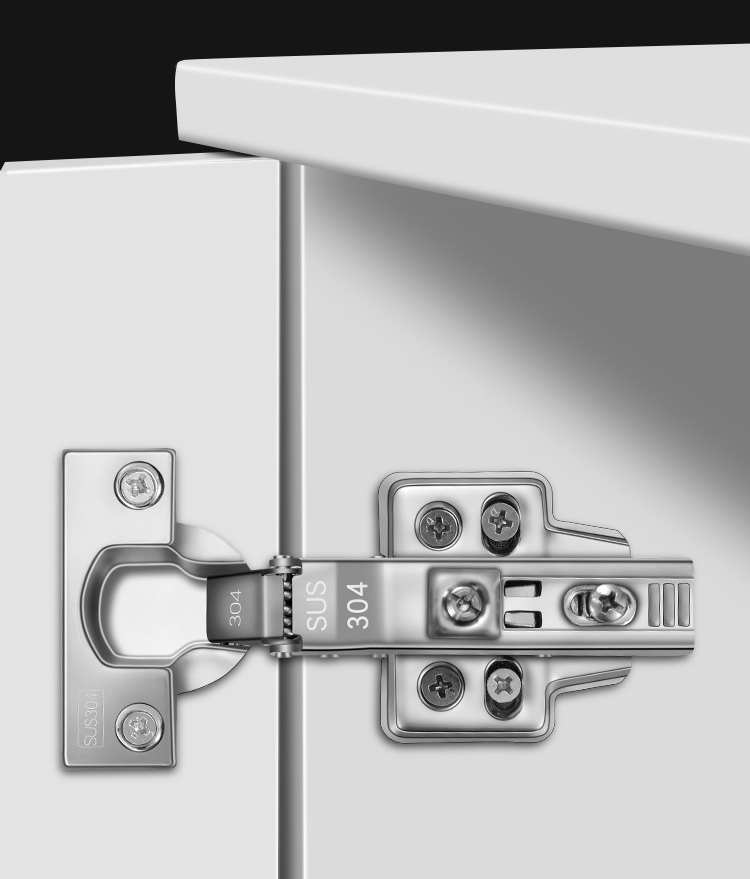What Are Sheet Metal Stamping Parts and How Do They Impact Modern Manufacturing?
2024-12-18
In today's world of manufacturing, precision, efficiency, and versatility are key to producing high-quality products. One of the most essential techniques to achieve these goals is sheet metal stamping. But what exactly are sheet metal stamping parts, and why are they so important in industries ranging from automotive to electronics? Let’s dive into the world of sheet metal stamping and explore how this process is transforming modern manufacturing.
What Are Sheet Metal Stamping Parts?
Sheet metal stamping is a manufacturing process that involves shaping and cutting metal sheets into specific forms using a stamping press. This technique is used to create parts that are often complex, precise, and mass-produced, making it an ideal choice for industries that require high-volume, high-quality components.
In the stamping process, a metal sheet (typically made of steel, aluminum, or brass) is placed between a set of dies. The die sets contain male and female components that shape or cut the metal sheet into the desired design when subjected to pressure. The process can include several operations like blanking, piercing, bending, embossing, forming, and coining to create parts with intricate features.
The parts produced through sheet metal stamping are often referred to as sheet metal stamping parts and can vary greatly in complexity, from simple brackets and panels to intricate connectors and housings.
How Does Sheet Metal Stamping Work?
The process of producing sheet metal stamping parts is relatively straightforward, though it requires advanced equipment and careful planning:
1. Die Design and Tooling: The first step in the process is creating custom dies that will shape the metal sheets into the desired form. The design of the die is critical, as it must ensure that the stamped parts meet the required dimensions and tolerances.
2. Metal Sheet Feeding: Once the die is ready, a sheet of metal is fed into the stamping press. The sheet metal can be of varying thicknesses, and the choice of material depends on the application.
3. Stamping and Shaping: The press applies force to the metal sheet, causing it to take the shape of the die. This can involve multiple stages, including cutting, bending, and punching, to create the final component.
4. Finishing: After the stamping process, the parts may undergo finishing steps such as deburring, trimming, or coating to improve their appearance and functionality.
5. Quality Control: Since sheet metal stamping requires tight tolerances, quality control is an integral part of the process. Measurements are taken during production to ensure that each part meets the required specifications.
Why Are Sheet Metal Stamping Parts Essential for Manufacturing?
1. Precision and Consistency
One of the most significant advantages of sheet metal stamping is its ability to produce parts with high precision and repeatability. In industries like automotive, aerospace, and electronics, even the slightest deviation in a component’s dimensions can lead to malfunctions or safety hazards. Sheet metal stamping ensures that each part is produced with the same dimensions and specifications, minimizing the chances of defects.
For example, automotive manufacturers rely on sheet metal stamping to produce everything from engine components to body panels with tight tolerances and uniform quality.
2. Cost-Effective for High-Volume Production
Sheet metal stamping is ideal for high-volume manufacturing. Once the dies are designed and set up, the process can produce large quantities of parts quickly and at a low cost per unit. This is particularly beneficial for industries that require large runs of identical parts, such as consumer electronics or appliance manufacturing.
The speed and efficiency of the stamping process significantly reduce production costs, which is especially important for keeping prices competitive in industries with low margins.
3. Versatility of Materials and Designs
Sheet metal stamping is a versatile process, capable of handling a variety of materials, including steel, stainless steel, aluminum, copper, brass, and more. Each material is chosen based on the specific requirements of the part, such as strength, weight, conductivity, or corrosion resistance.
Furthermore, sheet metal stamping can create parts with complex geometries, including intricate shapes, holes, bends, and embossments. This makes it a go-to choice for industries that require highly detailed, functional components, such as electronic housings, automotive brackets, and medical device enclosures.
4. High Strength and Durability
Metal components produced through sheet metal stamping are typically stronger and more durable than those made from plastic or other materials. This is why stamping is often used for parts that need to withstand significant stress or harsh environments. For instance, automotive chassis components and structural parts must be able to endure heavy loads, and sheet metal stamping ensures that they are built to last.
5. Reduced Waste and Improved Sustainability
Because sheet metal stamping uses precise cutting and shaping techniques, it generates minimal material waste compared to other manufacturing methods like casting or machining. Additionally, many metal materials used in stamping can be easily recycled, contributing to more sustainable production practices.
Key Industries That Benefit from Sheet Metal Stamping Parts
1. Automotive Industry
In the automotive industry, sheet metal stamping is indispensable for producing body panels, engine components, brackets, and structural parts. The ability to produce lightweight yet strong components is crucial for improving fuel efficiency and meeting safety standards. Electric vehicle manufacturers also rely on stamping for battery enclosures, chassis components, and other parts that need to be both durable and cost-effective.
2. Electronics and Electrical Components
Sheet metal stamping plays a significant role in the production of electronic enclosures, connectors, terminals, and circuit board housings. These parts need to be precisely manufactured to ensure proper functioning and safety. The consumer electronics industry, which requires components for devices like smartphones, computers, and appliances, heavily relies on stamping to meet its high demands for precision and speed.
3. Aerospace and Defense
The aerospace and defense industries use sheet metal stamping to produce critical components such as aircraft parts, fasteners, brackets, and fuel system components. Given the rigorous quality and safety standards in these fields, precision and reliability are paramount, and stamping offers a reliable way to produce parts that meet these stringent requirements.
4. Medical Devices
In the medical device industry, sheet metal stamping is used to manufacture components such as surgical instruments, implants, and medical enclosures. These parts often need to meet high regulatory standards for performance, strength, and safety, making precision metal stamping a perfect choice.
5. Appliances
For household and industrial appliances, sheet metal stamping is used to create durable and functional parts, including motor housings, covers, and brackets. The ability to produce these parts quickly and efficiently helps manufacturers meet consumer demand while keeping costs low.
Conclusion: How Are Sheet Metal Stamping Parts Shaping the Future of Manufacturing?
Sheet metal stamping parts are essential to the modern manufacturing landscape, enabling industries to produce high-quality, cost-effective, and durable components at scale. From automotive to electronics, aerospace, and medical devices, stamping provides the precision and versatility needed to meet the demanding standards of today’s fast-paced markets.
As manufacturing continues to evolve, sheet metal stamping remains a cornerstone of production, providing solutions for both high-volume and highly specialized needs. Its ability to reduce waste, improve efficiency, and deliver reliable parts at competitive prices makes it an indispensable tool for businesses across a wide range of industries.



